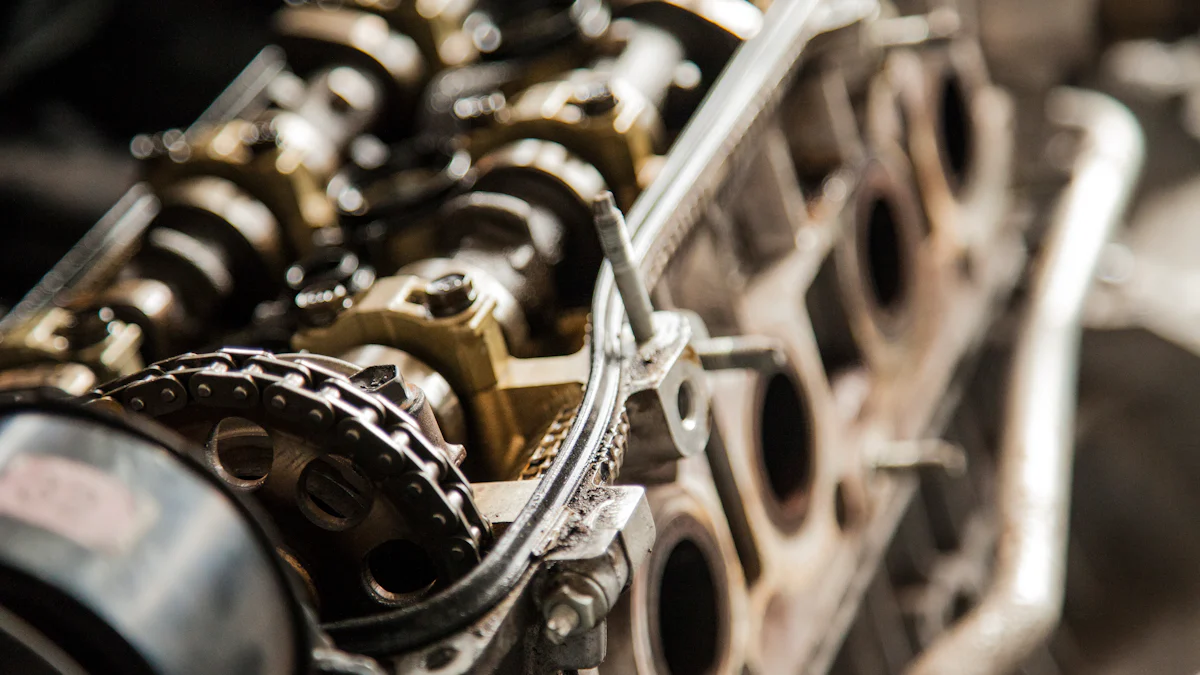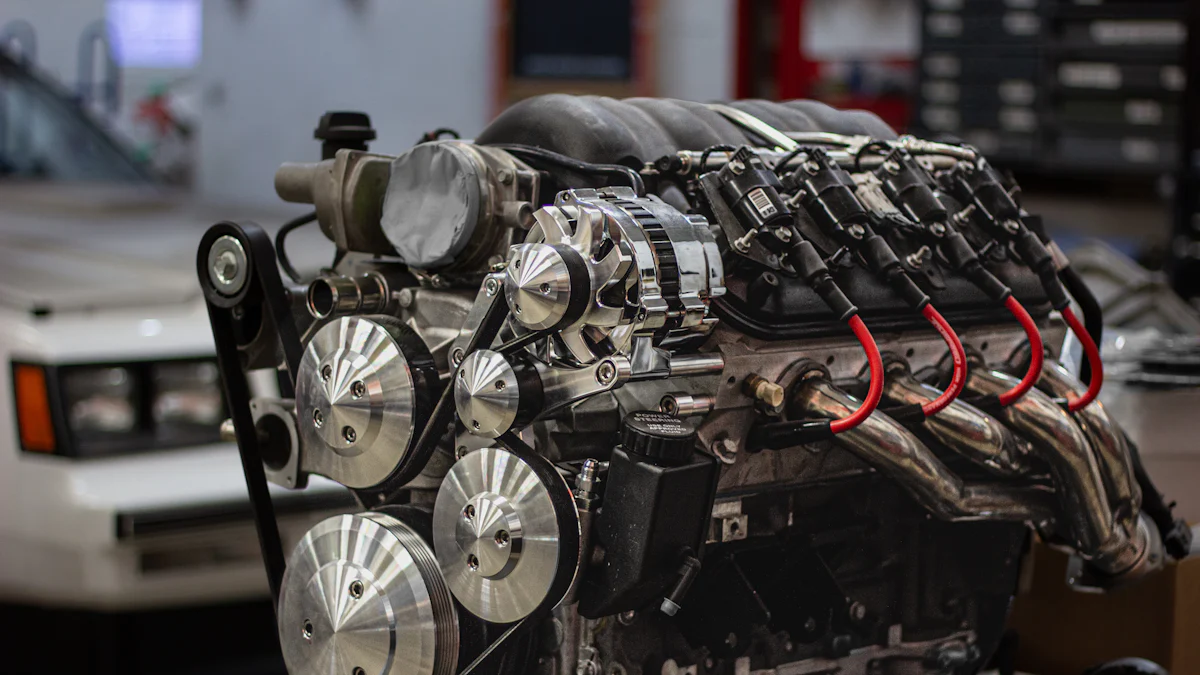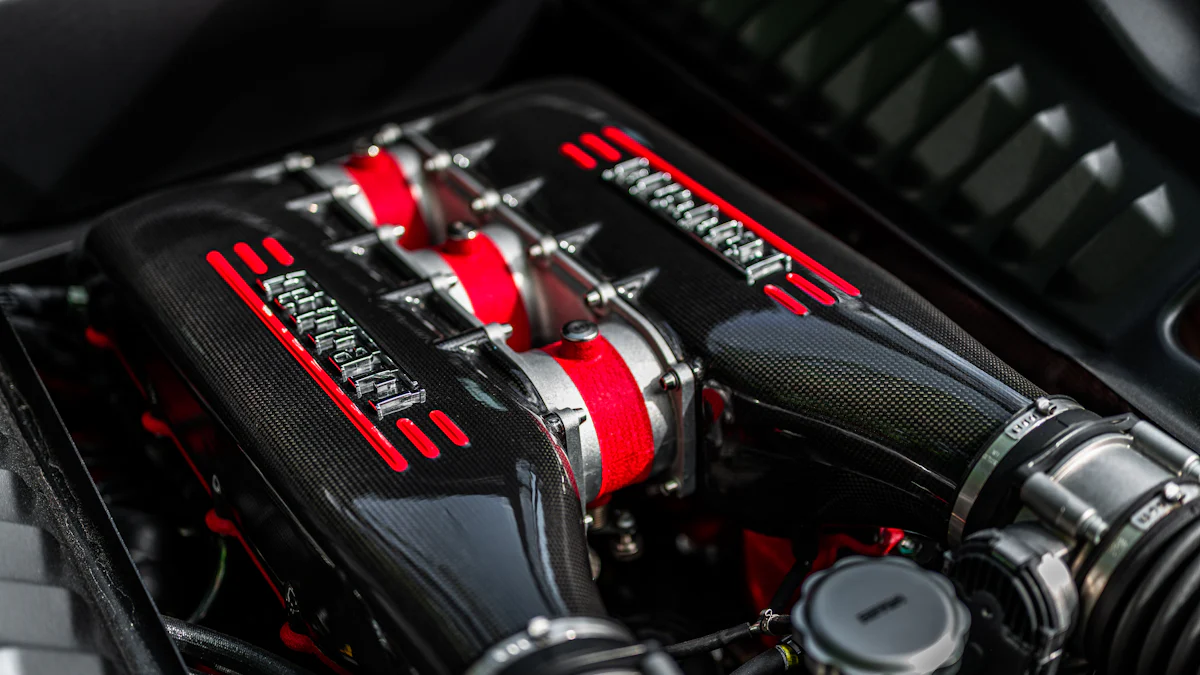
When delving into the realm of gm intake manifold casting numbers, understanding the intricate details becomes paramount. The significance lies in these numbers, acting as vital clues to unravel the mysteries behind Chevy engine components. This blog post aims to shed light on the essence of these numbers, guiding enthusiasts through the process of decoding and identifying casting numbers etched on engine intake manifolds. By grasping this fundamental aspect, individuals can navigate the world of Engineering Components with confidence and precision.
Understanding GM Intake Manifold Casting Numbers
When exploring the realm of Casting Numbers on GM intake manifolds, one must grasp their essence to unravel the mysteries they hold. These numbers serve as crucial identifiers, offering valuable insights into the world of engine components.
What are Casting Numbers?
Definition and Significance
The Casting Number on an intake manifold is a unique identifier that signifies its origin and specifications. Understanding these numbers is essential for accurate part identification and compatibility.
Common Locations on the Manifold
Casting Numbers are typically located in specific areas on the manifold, near the casting date or close to the carburetor mounting surface. Identifying these locations is key to decoding the information they provide accurately.
History of GM Casting Numbers
Evolution Over the Years
The evolution of GM Casting Numbers reflects advancements in manufacturing techniques and design preferences over different eras. Tracking these changes can offer valuable insights into the development of GM intake manifolds.
Notable Changes and Updates
Throughout history, GM Casting Numbers have undergone significant updates to adapt to changing technologies and market demands. Recognizing these alterations can help enthusiasts pinpoint specific models and production periods.
Types of GM Intake Manifolds
Different Models and Their Casting Numbers
Various GM intake manifold models are distinguished by unique Casting Numbers, indicating specific applications and configurations. Understanding these distinctions is vital for selecting the right manifold for a particular engine setup.
Identifying Features of Each Model
Each GM intake manifold model boasts distinct characteristics that set it apart from others in terms of performance and compatibility. By recognizing these features alongside their corresponding Casting Numbers, enthusiasts can make informed decisions when choosing components.
How to Locate Casting Numbers

Tools and Equipment Needed
Basic tools
- Begin with a clean workspace.
- Use a flashlight for better visibility.
- Prepare a set of wrenches for manifold removal.
- Have a marker or chalk ready for marking the casting number.
Advanced tools for hard-to-read numbers
- Consider using a magnifying glass or lens to inspect intricate details.
- Utilize a digital camera to capture the casting number for further analysis.
- Employ a specialized casting number reader tool for precise identification.
Step-by-Step Guide
Preparing the manifold
- Start by ensuring the engine is cool before handling the intake manifold.
- Disconnect any attached components, such as hoses or electrical connections, to access the manifold easily.
- Securely support the engine to prevent any accidental movement during the process.
Cleaning and inspecting the surface
- Thoroughly clean the intake manifold surface using a degreaser and wire brush to remove dirt and grime.
- Inspect the entire surface carefully for any signs of damage, corrosion, or irregularities that may affect readability.
- Wipe down the area around the casting number with a clean cloth to enhance visibility.
Finding and reading the casting number
- Locate the casting number on top of the intake near the carburetor mounting surface.
- Use adequate lighting and magnification if necessary to decipher small or worn numbers accurately.
- Record the complete casting number, including any prefixes or suffixes, for future reference.
Decoding GM Intake Manifold Casting Numbers

Interpreting the Numbers
Understanding the format
- Begin by examining the structure of casting numbers to unveil their hidden meanings.
- Identify the sequence and arrangement of digits to decode crucial information about the manifold.
- Note any specific patterns or conventions used in GM casting numbers for accurate interpretation.
Common prefixes and suffixes
- Recognize the significance of prefixes and suffixes in GM intake manifold casting numbers.
- Differentiate between various prefixes and suffixes to determine their impact on part identification.
- Familiarize yourself with common prefixes and suffixes to streamline the decoding process.
Using Reference Materials
GM manuals and guides
- Consult official GM manuals for detailed insights into intake manifold casting numbers.
- Refer to manufacturer-provided guides to cross-reference and validate your findings effectively.
- Utilize GM manuals as a reliable source of information to enhance your understanding of casting numbers.
Online databases and forums
- Explore online databases dedicated to cataloging GM intake manifold casting numbers for comprehensive reference.
- Engage with automotive forums to leverage collective knowledge and expertise in decoding intricate casting numbers.
- Tap into online resources for real-time updates and community-driven discussions on GM intake manifold identification.
Common Issues and Troubleshooting
Faded or Damaged Casting Numbers
Techniques for restoration
- Utilize a gentle abrasive method to restore faded casting numbers without causing damage.
- Employ a fine-grit sandpaper or abrasive pad to carefully remove surface oxidation.
- Use a specialized cleaning solution to enhance visibility and bring out the details of the casting numbers.
- Avoid harsh chemicals or aggressive scrubbing that may further deteriorate the casting number’s clarity.
When to seek professional help
- Consider seeking professional assistance if restoration attempts yield unsatisfactory results.
- Consult with experienced technicians or restoration experts for delicate casting number refurbishment.
- Evaluate the extent of damage and complexity of the casting number before deciding on professional intervention.
- Opt for expert guidance when dealing with intricate or historically significant casting numbers.
Misleading or Incorrect Numbers
Identifying counterfeit parts
- Scrutinize suspiciously low-priced components that may indicate counterfeit Block Chevy Casting numbers.
- Look for inconsistencies in quality, finish, or material composition that could signal counterfeit production.
- Verify the authenticity of Ford parts by comparing Block Casting numbers with reputable sources or databases.
- Exercise caution when purchasing components with unusually low prices compared to market standards.
Cross-referencing with reliable sources
- Validate casting numbers by cross-referencing them with official manufacturer documentation or catalogs.
- Consult industry experts, forums, or online resources to verify the accuracy and authenticity of identified Block Chevy Casting numbers.
- Utilize established reference materials to confirm the legitimacy of Ford parts based on their corresponding casting identifiers.
- Ensure thorough research and verification from trusted sources before finalizing part acquisitions.
In summary, understanding the intricate details of casting numbers on GM intake manifolds is crucial for enthusiasts. Accurate identification of these numbers provides valuable insights into engine components and their compatibility. By utilizing this information for restoration or verification, individuals can ensure precision in part selection and maintenance. Werkwell encourages readers to explore the world of Block Casting numbers with confidence and welcomes feedback and questions to enhance knowledge sharing within the community.
Post time: Jun-27-2024



